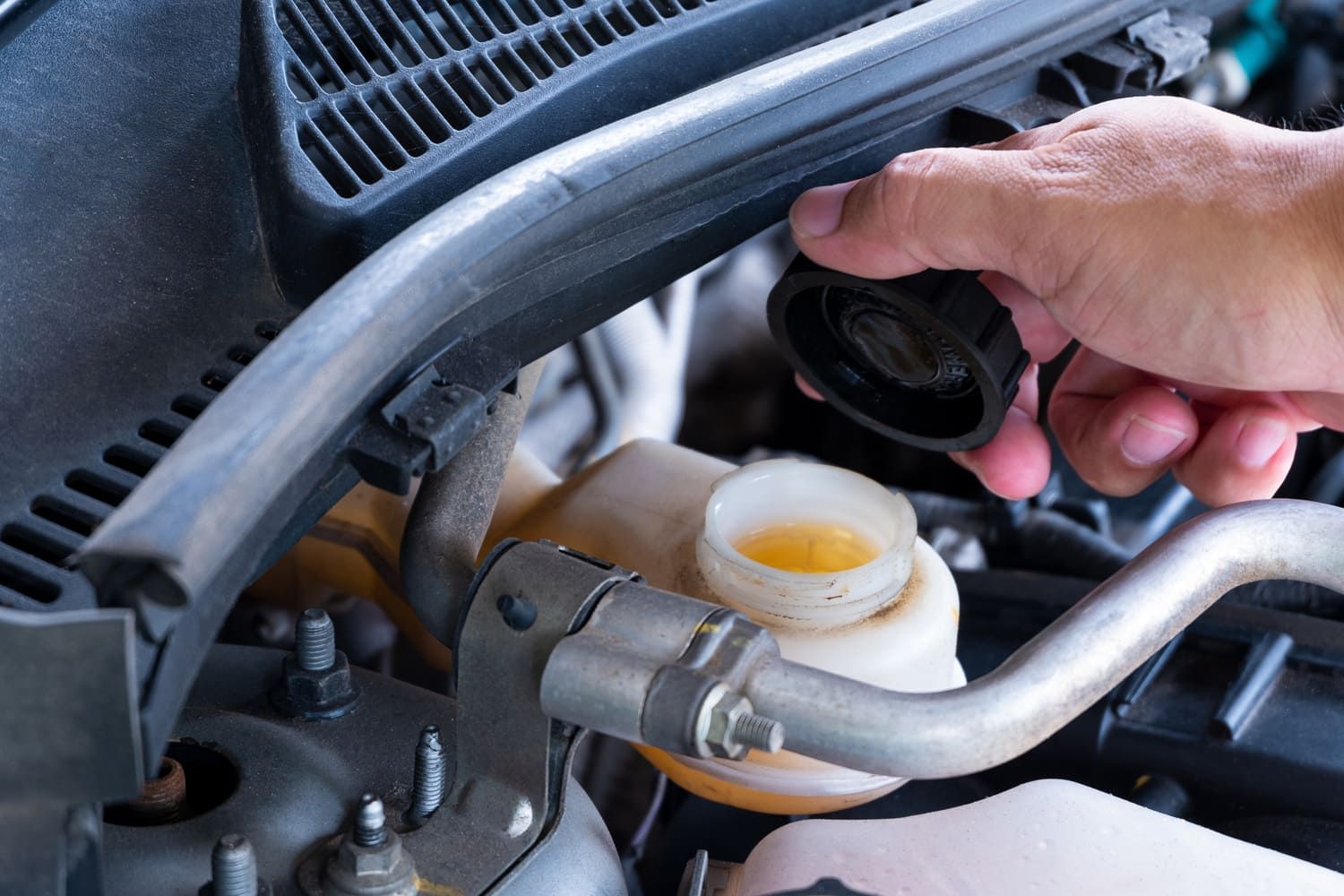>
Blog>
How Much Does It Cost To Change Brake Fluid in the UK?How Much Does It Cost To Change Brake Fluid in the UK?
The average cost of changing brake fluid in the UK is £50.
Brake fluid might not be visible, but like pads and discs, it wears down over time and loses effectiveness. If neglected, it can lead to costly repairs and serious safety risks.
In this article, we’ll cover why changing your brake fluid is essential, how often it should be done, and what you can expect to pay.
Key takeaways
- How much does it cost to change brake fluid?
- Brake fluid change costs by car model
- Brake fluid change costs by location in the UK
- What does brake fluid do?
- Why does brake fluid need changing?
- Is a brake fluid change included in vehicle servicing?
- How long does a brake fluid change take?
- What brake fluid does my car need?
- How often does brake fluid need to be changed?
- What happens if you don’t change your brake fluid?
- Can I change brake fluid myself?
How much does it cost to change brake fluid?
UK car brake fluid costs are usually around £50, but these change costs vary by garage and location, so it’s worth shopping around. The general range goes from £40 to £90.
Getting your brakes checked at the same time usually won’t add much to the cost, and it’s always worth doing. If needed, you can use car repair finance to spread the payments.

Brake fluid change costs by car model
Brake fluid change costs also vary by model. Here are some typical price ranges.
Note that these price approximations are subject to change depending on your provider and individual vehicle.
Brake fluid change costs by location in the UK
Brake fluid change costs can vary depending on where you live in the UK.
Larger cities and areas with higher living costs tend to charge more, while smaller towns may offer more competitive prices.
Here’s a snapshot of typical price ranges by location to help you budget.
What does brake fluid do?
Brake fluid is a hydraulic fluid that transmits force from the master cylinder when you press the brake pedal. It travels through pipes to cylinders at each wheel, applying pressure to the brakes.
The basic braking system has remained largely unchanged for many years, except for additions such as ABS.
Why does brake fluid need changing?
Brake fluid deteriorates over time and can become contaminated with rust, dirt, and debris. This reduces its effectiveness in transmitting force to the brakes.
Also, if air enters the system, it absorbs braking force instead of slowing the car, making your vehicle unsafe.
Is a brake fluid change included in vehicle servicing?
No, brake fluid changes aren’t always included in a car service.
That’s why it's so important to remember to change your brake fluid every two years or so. This helps you prevent brake failure and keeps your car road safe.
How long does a brake fluid change take?
Usually, a mechanic will take 30 to 60 minutes to change your brake fluid. However, your appointment may last longer if you add in extra services or checks.
What brake fluid does my car need?
Different car models require specific types of brake fluid, but don’t worry, most modern cars have a label on the brake fluid reservoir cap indicating the correct type.
Reputable garages keep a range of brake fluids in stock to ensure they can service your vehicle properly.

How often does brake fluid need to be changed?
You should change your brake fluid about every two years.
It’s important to check the brake fluid regularly during your monthly fluid level inspections, paying attention not just to the level but also to its condition.
You will want to check that your fluid is not:
- Dark - It should be a golden brown similar to the colour of olive oil
- Contaminated -Any particles will cause issues, particularly in cars with ABS
- Too full - Brake fluid is corrosive, and overflowing will damage nearby components
- The reservoir cap is tight - Moisture can enter if the cap is loose
What happens if you don’t change your brake fluid?
If you don’t change your brake fluid, braking performance can suffer and become unsafe.
Over time, the fluid can absorb moisture and debris, which makes it degrade faster. When brakes get hot, this moisture can cause the fluid to boil prematurely, leading to dangerous effects such as brake fade during extended braking.
Can I change brake fluid myself?
Unless you are a professional, it is recommended that you do not change your brake fluid yourself.
This task involves working on safety-critical components and lifting the car, which can be hazardous without the proper tools and experience. Changing brake fluid can take several hours and is best left to qualified mechanics or garages.
The final outlook
Keeping your brakes in good shape is essential, and brake fluid changes won’t break the bank. Always compare quotes and ask for a brake check while you’re at it—saving time and money in one go.
Split the cost with Bumper
Don’t let a pesky brake fluid change disrupt your budget.
With Bumper's car repair loans you can split the cost of repairs into monthly payments at no extra cost.
Apply online for up to £5,000 and choose from 1,000s of trusted repairers.
Related Posts